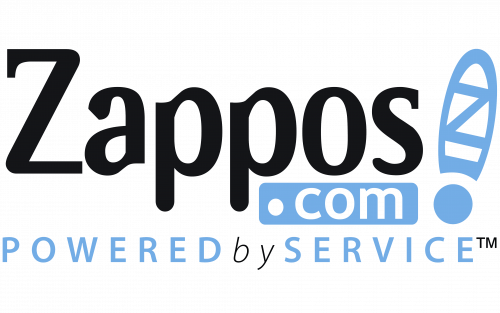Driving Transformation: The Leadership Legacy of Alan Mulally

Unveiling the Inspiring Leadership Journey of Alan Mulally
In the annals of leadership history, there are few individuals whose impact reverberates as strongly as that of Alan Mulally. With a career spanning over four decades, Mulally’s leadership prowess and transformative approach have left an indelible mark on the corporate world. From his remarkable tenure as the CEO of Ford Motor Company to his earlier achievements at Boeing, Mulally’s leadership journey is replete with valuable lessons and inspiring stories that continue to resonate with leaders across industries.
At the helm of Ford, Mulally orchestrated one of the most remarkable turnarounds in automotive history. When he assumed the role of CEO in 2006, the iconic American automaker was on the verge of collapse. Crippled by financial turmoil, market share decline, and internal strife, Ford faced a seemingly insurmountable challenge. Yet, under Mulally’s guidance, the company not only weathered the storm but emerged stronger than ever, reclaiming its position as a global industry leader.
Mulally’s leadership style is often described as visionary, and rightly so. He possessed a unique ability to envision the future of his organization and inspire others to share that vision. At Ford, Mulally charted a new course, placing emphasis on collaboration, transparency, and a shared sense of purpose. Breaking down silos and fostering a culture of open communication, he united the company’s disparate divisions into a cohesive force, collectively working towards a common goal: reviving the once-mighty Ford brand.
One of the key lessons from Mulally’s leadership journey lies in his adeptness at leading through crisis. In 2008, the global financial crisis hit the automotive industry hard, with many companies succumbing to the pressures of the economic downturn. Ford, under Mulally’s astute leadership, was able to navigate these treacherous waters with resilience and determination. Making tough decisions, such as mortgaging company assets to secure much-needed capital, Mulally steered Ford away from the brink of bankruptcy and towards a path of sustainable recovery.
Central to Mulally’s approach was his unwavering belief in the power of teams. He understood that high-performing teams were the engine driving organizational success. By fostering a culture of trust, encouraging collaboration, and nurturing talent, Mulally built a cohesive team at Ford that thrived on shared accountability and mutual support. His “One Ford” philosophy brought together employees from different functions and geographies, aligning them towards a unified purpose and enabling the company to achieve remarkable results.
Effective communication and transparency were pillars of Mulally’s leadership philosophy. He instituted a revolutionary practice at Ford called the “Business Plan Review” meetings. These weekly gatherings, attended by senior executives from all divisions, created a platform for open dialogue, data-driven decision-making, and collective problem-solving. Mulally’s commitment to transparency and his exceptional communication skills fostered an environment where issues were addressed promptly, challenges were met head-on, and progress was celebrated collectively.
Beyond his strategic acumen and business acuity, Mulally’s leadership was also characterized by his humility and emotional intelligence. He recognized the importance of connecting with people on a deeper level, listening attentively, and leading with empathy. By creating an environment where individuals felt valued and heard, Mulally engendered trust, loyalty, and dedication among his employees. This human-centric approach not only fostered a sense of belonging but also inspired a culture of innovation and creativity.
Mulally’s legacy extends far beyond his tenure at Ford. His impact on the automotive industry, the broader business community, and leadership development is undeniable. His relentless pursuit of innovation, his ability to manage change effectively, and his unwavering commitment to excellence have set a benchmark for leaders worldwide.
In this article, we embark on a journey to explore the leadership lessons and stories of Alan Mulally. Through a series of captivating anecdotes and in-depth analysis, we uncover the secrets behind his extraordinary success and distill them into valuable insights for today’s leaders. From visionary leadership and crisis management to team-building, communication, and emotional intelligence, we delve into the key aspects of Mulally’s leadership approach that propelled him to greatness.
Join us as we unravel the remarkable leadership journey of Alan Mulally, a trailblazer whose enduring influence continues to shape the landscape of leadership and inspire generations to come.
The Visionary Leader
Overview of Mulally’s visionary leadership style
Alan Mulally’s leadership style was characterized by a rare blend of foresight, strategic thinking, and a relentless commitment to innovation. He possessed the uncanny ability to envision the future of his organization, anticipate industry trends, and make bold decisions that would position his company at the forefront of the automotive landscape.
Mulally recognized that in order to transform Ford and revive its fortunes, he needed to foster a culture of collaboration and transparency. He understood that a shared vision was essential for driving organizational alignment and unlocking the collective potential of the company. By articulating a clear and compelling vision for Ford’s future, Mulally instilled a sense of purpose and direction that resonated with employees at all levels.
Story 1: How Mulally transformed Ford’s culture by fostering collaboration and transparency
One of the defining moments in Mulally’s leadership journey at Ford was his early recognition of the need to dismantle the silos that had long plagued the company. When Mulally joined Ford, there was a pervasive culture of division and internal competition, hindering effective communication and collaboration. Mulally understood that this fragmented approach was detrimental to the organization’s success.
To break down these barriers, Mulally introduced a series of initiatives aimed at fostering collaboration and transparency. He instituted regular meetings where senior executives from different divisions came together to openly discuss challenges, share information, and collectively address issues. These sessions, known as the “Business Plan Review” meetings, became a hallmark of Mulally’s leadership approach and served as a catalyst for cultural transformation within Ford.
During these meetings, Mulally encouraged open and honest dialogue, emphasizing the importance of data-driven decision-making. He created an environment where leaders felt safe to voice concerns, propose ideas, and challenge the status quo. Through this transparent and collaborative approach, Mulally was able to leverage the collective wisdom and expertise of his team, making informed decisions that propelled Ford towards its goals.
Key lessons: Creating a compelling vision and driving organizational alignment
Mulally’s visionary leadership provides several crucial lessons for today’s leaders:
-
Develop a compelling vision: A strong and compelling vision serves as a guiding light for the organization. Leaders must articulate a clear, inspiring, and future-oriented vision that resonates with employees and motivates them to strive for greatness.
-
Foster collaboration and transparency: Break down silos and foster a culture of collaboration and transparency. Encourage open dialogue, establish platforms for information-sharing, and create an environment where diverse perspectives are valued and heard.
-
Drive organizational alignment: Align the entire organization around the shared vision, goals, and values. Ensure that everyone understands and embraces the strategic direction, creating a sense of purpose and unity that propels the organization forward.
-
Embrace data-driven decision-making: Cultivate a culture of informed decision-making based on data and facts. Encourage leaders to analyze information, consider different viewpoints, and make decisions that are grounded in evidence.
By embracing these lessons, leaders can inspire their teams, drive organizational alignment, and position their companies for long-term success in an ever-evolving business landscape.
In the next section, we will delve into how Alan Mulally’s leadership skills were put to the ultimate test during a time of crisis and how he led Ford through the global financial downturn with resilience and strategic acumen.
Leading through Crisis
Mulally’s approach to navigating difficult times
One of the true tests of leadership is how effectively leaders navigate through crises. Alan Mulally’s tenure at Ford coincided with one of the most challenging periods in the history of the automotive industry—the global financial crisis of 2008. As the crisis unfolded, Mulally faced immense pressure to steer Ford through the storm and ensure its survival.
Story 2: How Mulally steered Ford through the global financial crisis
When the financial crisis hit, the automotive industry was severely impacted, with many companies facing bankruptcy and collapse. Ford was no exception, grappling with declining sales, mounting debt, and a shrinking market share. Mulally recognized the gravity of the situation and understood that immediate action was required to safeguard the future of the company.
Mulally embarked on a series of bold and decisive measures to address the crisis head-on. He implemented a comprehensive restructuring plan that involved streamlining operations, reducing costs, and focusing on core strengths. This involved divesting non-essential brands, closing factories, and renegotiating labor contracts. Mulally also made the difficult decision to mortgage Ford’s assets, securing vital funding that allowed the company to weather the storm.
During this turbulent period, Mulally’s leadership was characterized by unwavering resolve, transparent communication, and a commitment to preserving jobs. He engaged with employees at all levels, providing regular updates on the state of the company and the progress of the turnaround efforts. This open and honest communication fostered a sense of trust and confidence among employees, who rallied behind Mulally’s leadership and remained committed to the company’s success.
Through Mulally’s strategic acumen, relentless focus, and ability to make tough decisions, Ford emerged from the crisis stronger and more resilient. While other automakers faltered or succumbed to bankruptcy, Ford not only survived but also avoided taking a government bailout—a testament to Mulally’s leadership and his unwavering commitment to the company’s long-term success.
Key lessons: Maintaining resilience, making tough decisions, and inspiring confidence during challenging times
Mulally’s leadership during the global financial crisis provides several valuable lessons for leaders facing adversity:
-
Maintain resilience: In times of crisis, leaders must display resilience and tenacity. They must remain focused on the bigger picture, maintain a positive outlook, and inspire confidence in their teams. By demonstrating resilience, leaders can help their organizations navigate through uncertainty and emerge stronger on the other side.
-
Make tough decisions: Crises often require leaders to make difficult and unpopular decisions. Effective leaders must have the courage to make tough calls, even when faced with resistance or criticism. They must prioritize the long-term survival and success of the organization over short-term comfort or popularity.
-
Communicate transparently: Open and honest communication is crucial during times of crisis. Leaders should keep their teams informed about the challenges, the progress being made, and the actions being taken. Transparent communication builds trust, fosters engagement, and helps align employees around a shared purpose.
-
Inspire confidence: Leaders must inspire confidence in their teams and stakeholders, even in the face of adversity. By demonstrating a strong belief in the organization’s capabilities, communicating a clear vision for the future, and leading by example, leaders can instill a sense of hope, resilience, and determination.
By embracing these lessons, leaders can effectively navigate through crises, guide their organizations towards recovery, and position them for long-term success.
In the next section, we will explore how Alan Mulally’s emphasis on building high-performing teams played a pivotal role in Ford’s transformation and how leaders can foster a collaborative and inclusive team culture.
Building High-Performing Teams
Mulally’s emphasis on teamwork and creating a culture of trust
Alan Mulally recognized the crucial role that teams play in driving organizational success. He understood that high-performing teams are the foundation upon which innovation, collaboration, and sustainable growth are built. With this understanding, Mulally placed a strong emphasis on fostering a culture of trust, teamwork, and shared accountability throughout the organization.
Mulally believed that building trust was essential for creating a cohesive and productive team environment. He actively worked to break down the barriers that hindered collaboration and encouraged open communication among team members. By fostering a sense of trust, Mulally created an environment where individuals felt safe to share their ideas, challenge the status quo, and take calculated risks, all in service of driving Ford’s success.
Story 3: The “One Ford” approach and its impact on team collaboration
A defining aspect of Mulally’s leadership journey at Ford was his introduction of the “One Ford” approach. The “One Ford” philosophy aimed to unite the various divisions and regions of the company under a common vision, strategy, and set of values. This approach broke down the silos that had long hindered effective collaboration, allowing teams to work together seamlessly towards shared goals.
Through the “One Ford” approach, Mulally fostered a culture of collaboration and inclusivity. He encouraged cross-functional teams to collaborate and share best practices, leveraging the diverse expertise within the organization. Mulally believed that by bringing together individuals from different backgrounds and functions, Ford could tap into a wider range of perspectives and ideas, leading to innovative solutions and improved decision-making.
This emphasis on collaboration and teamwork extended beyond internal teams. Mulally also fostered stronger relationships with suppliers, recognizing their importance in Ford’s success. By creating an atmosphere of trust and collaboration with suppliers, Mulally forged mutually beneficial partnerships that enhanced Ford’s supply chain efficiency and overall competitiveness.
Key lessons: Fostering collaboration, promoting diversity, and nurturing talent
Mulally’s focus on building high-performing teams offers valuable lessons for leaders seeking to create a collaborative and inclusive team culture:
-
Foster collaboration: Encourage collaboration and break down silos by creating opportunities for teams to work together, share information, and learn from one another. Create a sense of collective ownership and responsibility towards shared goals.
-
Promote diversity and inclusion: Embrace diversity in all its forms, including diversity of perspectives, backgrounds, and experiences. Recognize the value of diverse teams in generating innovative ideas and driving better decision-making.
-
Nurture talent: Invest in developing and empowering individuals within the organization. Provide opportunities for growth, learning, and skill-building. Foster a culture that recognizes and rewards high performance, while also encouraging continuous development and improvement.
-
Build trust: Cultivate an environment of trust and psychological safety, where team members feel comfortable expressing their opinions, taking risks, and challenging the status quo. Establish open channels of communication and lead by example in building trust within the team.
By embracing these lessons, leaders can create a collaborative and inclusive team culture that drives innovation, enhances productivity, and fosters a sense of collective purpose and achievement.
In the next section, we will explore how effective communication and transparency were integral to Alan Mulally’s leadership approach and how leaders can enhance their communication skills to drive organizational success.
Communication and Transparency
Mulally’s exceptional communication skills and focus on transparency
Effective communication and transparency were integral components of Alan Mulally’s leadership approach. Mulally recognized that clear and open communication was essential for building trust, aligning teams, and driving organizational success. He prioritized transparency throughout the organization, creating an environment where information flowed freely, and decisions were made based on facts and data.
Mulally believed that leaders should be exceptional communicators, capable of conveying complex ideas in a simple and relatable manner. He had a natural ability to distill information and present it in a way that resonated with diverse audiences. Whether it was addressing employees, engaging with stakeholders, or communicating with the media, Mulally’s communication style was characterized by clarity, authenticity, and a genuine connection with his audience.
Story 4: The famous “Business Plan Review” meetings and their impact on organizational transparency
One of the most notable examples of Mulally’s commitment to transparency was the implementation of the “Business Plan Review” meetings at Ford. These weekly meetings brought together senior executives from all divisions and regions to discuss the progress, challenges, and opportunities facing the company. During these meetings, Mulally encouraged open dialogue, data-driven discussions, and full transparency.
The “Business Plan Review” meetings became a platform for leaders to share updates on their respective areas of responsibility, raise concerns, and propose solutions. This transparent exchange of information allowed for cross-functional collaboration, collective problem-solving, and a shared understanding of the company’s overall performance. It created an environment where leaders felt empowered to speak up, take ownership, and contribute to the collective success of Ford.
Mulally’s commitment to transparency extended beyond the executive suite. He regularly communicated with employees at all levels, providing updates on the company’s performance, progress towards goals, and challenges that lay ahead. By keeping employees informed and engaged, Mulally fostered a sense of ownership and unity, instilling confidence in the organization’s direction and goals.
Key lessons: Effective communication, active listening, and the power of transparency
Mulally’s approach to communication and transparency offers several valuable lessons for leaders:
-
Communicate with clarity and authenticity: Leaders should strive to communicate complex ideas in a clear and relatable manner. Be authentic, genuine, and approachable in your communication style to foster trust and connection with your audience.
-
Practice active listening: Effective communication is a two-way street. Actively listen to your team members, stakeholders, and customers. Create opportunities for feedback and dialogue, valuing diverse perspectives and demonstrating that you value their input.
-
Embrace transparency: Establish a culture of transparency by sharing information openly and promoting accountability. Transparent communication builds trust, fosters collaboration, and ensures that decisions are made based on accurate information.
-
Leverage technology for communication: Explore innovative communication tools and technologies that facilitate efficient and transparent communication across the organization. Embrace digital platforms, collaboration tools, and social media to foster engagement and connect with diverse audiences.
By adopting these lessons, leaders can enhance their communication skills, create a culture of transparency, and build strong relationships with their teams and stakeholders.
In the next section, we will explore the profound impact of Mulally’s humility and emotional intelligence on his leadership style and how leaders can cultivate these qualities to drive success.
Humility and Emotional Intelligence
Mulally’s humility and empathetic leadership style
Alan Mulally’s leadership was marked by his humility and empathetic approach. Despite his remarkable accomplishments and industry stature, Mulally remained humble, approachable, and genuinely interested in the perspectives and well-being of others. He understood that leadership is not about wielding power or seeking personal recognition, but about serving others and creating an environment where individuals can thrive.
Mulally’s humility was evident in his willingness to listen and learn from others. He recognized that he didn’t have all the answers and actively sought input from his team members, valuing their expertise and insights. This humble mindset not only fostered collaboration and innovation but also empowered his team members, instilling a sense of ownership and pride in their contributions.
Story 5: How Mulally leveraged emotional intelligence to build trust and rapport with employees
An example of Mulally’s exceptional emotional intelligence was his approach to building trust and rapport with employees. He recognized the importance of connecting with individuals on a deeper level, understanding their needs, and appreciating their contributions. Mulally took the time to engage with employees, listen to their concerns, and celebrate their achievements.
Mulally’s empathetic leadership was particularly evident during challenging times. He acknowledged the personal and emotional toll that the global financial crisis had on Ford’s employees. Through his compassionate approach, he provided support, reassurance, and a sense of belonging, ensuring that employees felt valued and understood.
Furthermore, Mulally’s emotional intelligence enabled him to address conflicts and challenges with empathy and tact. He understood that leadership involved managing relationships and emotions effectively. By empathetically navigating difficult conversations, he fostered a culture of respect, open dialogue, and constructive problem-solving.
Key lessons: Cultivating humility, developing emotional intelligence, and leading with empathy
Mulally’s leadership journey offers valuable lessons for leaders seeking to cultivate humility, emotional intelligence, and empathy:
-
Cultivate humility: Stay grounded, remain open to learning, and recognize the strengths and contributions of others. Embrace a humble mindset that values collaboration and empowers others to excel.
-
Develop emotional intelligence: Enhance your self-awareness, empathy, and emotional regulation. Understand your own emotions and those of others, allowing you to connect on a deeper level and respond effectively to the needs of your team.
-
Lead with empathy: Seek to understand the experiences, perspectives, and emotions of your team members. Demonstrate empathy by actively listening, showing support, and creating an inclusive environment where everyone feels valued.
-
Build trust through authenticity: Foster a culture of trust by being authentic, transparent, and genuine in your interactions. Demonstrate consistency between your words and actions, honoring commitments, and valuing the trust placed in you as a leader.
By embracing these lessons, leaders can create an environment of trust, collaboration, and respect. Cultivating humility, emotional intelligence, and empathy not only enhances leadership effectiveness but also fosters a positive and inclusive organizational culture.
In the next section, we will explore Mulally’s role as a champion of innovation and change management, and how leaders can drive innovation and manage change effectively within their organizations.
Innovation and Change Management
Mulally’s role in fostering innovation and managing change
Alan Mulally’s leadership journey is synonymous with driving innovation and successfully managing change within organizations. He understood that in order to remain competitive in a rapidly evolving world, companies must embrace innovation, adapt to change, and continuously push the boundaries of what is possible.
Mulally fostered a culture of innovation at Ford by encouraging creativity, curiosity, and a willingness to take calculated risks. He believed that innovation should be embedded in the DNA of the organization and embraced by every employee. By providing resources, support, and recognition for innovative ideas, Mulally cultivated an environment where experimentation and out-of-the-box thinking were valued.
Story 6: Mulally’s transformation of Ford’s product lineup and introduction of the Ford Mustang
A notable example of Mulally’s commitment to innovation was his transformation of Ford’s product lineup. Under his leadership, Ford introduced a series of groundbreaking vehicles that captured the imagination of consumers and reinvigorated the brand. One of the most iconic vehicles during this time was the relaunch of the Ford Mustang.
Mulally recognized the enduring appeal of the Mustang and the emotional connection it held for Ford enthusiasts. With his unwavering belief in the power of iconic brands, Mulally prioritized the redesign and reintroduction of the Mustang, capturing the essence of its heritage while infusing it with modern technology and design. The successful relaunch of the Mustang not only revitalized the brand but also showcased Ford’s commitment to innovation and its ability to connect with customers on an emotional level.
Key lessons: Embracing innovation, managing change effectively, and staying ahead of the curve
Mulally’s leadership journey offers valuable insights into driving innovation and managing change:
-
Embrace innovation as a core value: Foster a culture that values innovation, creativity, and a willingness to challenge the status quo. Encourage employees at all levels to contribute their ideas and empower them to experiment and take calculated risks.
-
Nurture a learning mindset: Encourage continuous learning and growth within the organization. Create opportunities for skill development, provide access to resources and training, and foster a culture that embraces curiosity and embraces new ideas.
-
Manage change proactively: Anticipate and embrace change rather than react to it. Develop a proactive approach to change management, ensuring that the organization is agile and adaptable to evolving market dynamics.
-
Stay ahead of the curve: Foster a culture of forward thinking, monitoring industry trends, and anticipating customer needs. Encourage a mindset of continuous improvement and innovation to stay ahead of competitors and drive sustainable growth.
By embracing these lessons, leaders can create an environment that fosters innovation, effectively manages change, and positions their organizations as industry leaders.
In the next section, we will explore the lasting legacy of Mulally’s leadership and the continued success of Ford, underscoring the importance of leaving a lasting impact and inspiring future leaders.
Legacy and Impact
Mulally’s lasting impact on Ford and the industry
Alan Mulally’s leadership legacy at Ford is both profound and enduring. Under his guidance, Ford experienced a remarkable transformation, overcoming significant challenges and emerging as a stronger, more innovative, and globally competitive company. Mulally’s impact extended far beyond the boundaries of Ford, influencing the broader automotive industry and setting new standards for leadership excellence.
One of Mulally’s most significant achievements was his restoration of Ford’s financial health. Through his strategic decisions, cost-cutting measures, and disciplined approach, Mulally steered Ford away from the brink of bankruptcy and positioned it on a path of sustainable growth. The financial turnaround of Ford served as a beacon of hope for the industry, demonstrating that even in the face of adversity, with visionary leadership and a commitment to change, remarkable transformations are possible.
Mulally’s emphasis on collaboration, transparency, and a shared vision laid the foundation for a cultural shift within Ford. The “One Ford” approach, which he championed, brought together diverse teams, fostering collaboration, innovation, and a sense of unity across the organization. This cultural transformation continues to shape Ford’s success, as it remains committed to its core values and a unified purpose.
Beyond his impact on Ford, Mulally’s leadership approach influenced the broader business community. His emphasis on transparency, effective communication, and building high-performing teams has become a model for organizations worldwide. Mulally’s success serves as a testament to the power of visionary leadership, strategic decision-making, and fostering a culture of trust and collaboration.
Story 7: The legacy of Mulally’s leadership and the continued success of Ford
Mulally’s leadership legacy at Ford is evident in the continued success of the company long after his tenure as CEO. The foundations he laid, the cultural shifts he instilled, and the strategic decisions he made continue to shape Ford’s trajectory. The company has maintained its commitment to innovation, introducing groundbreaking electric and autonomous vehicles, and aligning itself with the future of mobility.
Furthermore, Mulally’s influence on the industry is reflected in the recognition and accolades he has received. He is widely regarded as one of the most influential leaders in the automotive sector, with his leadership style and success serving as a source of inspiration for current and aspiring leaders across industries.
Key lessons: Leaving a lasting legacy, inspiring future leaders, and driving sustainable growth
Alan Mulally’s leadership journey imparts several key lessons for leaders seeking to leave a lasting legacy and drive sustainable growth:
-
Foster a purpose-driven culture: Instill a sense of purpose and a shared vision within the organization. Align employees around a common goal and core values that guide decision-making, drive innovation, and inspire collective action.
-
Develop leaders for the future: Invest in developing the next generation of leaders. Nurture talent, provide opportunities for growth and development, and cultivate a culture of continuous learning that prepares leaders to navigate challenges and drive success in a rapidly changing world.
-
Embrace innovation and change: Create an environment that encourages innovation, embraces change, and stays ahead of industry trends. Foster a culture that values creativity, curiosity, and adaptability, positioning the organization for sustained success.
-
Inspire others through authentic leadership: Lead with humility, empathy, and authenticity. Build trust, communicate with clarity, and create an inclusive environment where individuals feel valued and empowered to contribute their best.
By embracing these lessons, leaders can leave a lasting impact on their organizations, inspire future leaders, and drive sustainable growth well beyond their tenure.
Alan Mulally’s leadership journey is a testament to the transformative power of visionary leadership, collaboration, transparency, and the relentless pursuit of excellence. His remarkable achievements at Ford and his lasting impact on the industry serve as a source of inspiration for leaders across the globe. By studying and applying the leadership lessons and stories of Alan Mulally, leaders can navigate challenges, foster innovation, build high-performing teams, and leave a lasting legacy of success in their own organizations.
Embracing the Mulally Model: Inspiring Leadership for a Thriving Future
In the realm of leadership, the journey of Alan Mulally stands as a shining example of transformative leadership, resilience, and the power of visionary thinking. His remarkable achievements at Ford Motor Company, coupled with his enduring impact on the industry, make him an icon of leadership excellence. Through the exploration of Mulally’s leadership lessons and stories, leaders can glean invaluable insights to navigate today’s complex and rapidly changing business landscape.
Mulally’s leadership journey showcased the importance of creating a compelling vision and driving organizational alignment. By fostering collaboration, transparency, and a shared sense of purpose, he united teams and propelled them towards a common goal. Leaders can follow in Mulally’s footsteps by crafting and effectively communicating a compelling vision, fostering a culture of collaboration, and aligning their teams towards shared objectives.
Mulally’s ability to lead through crisis was remarkable. During the global financial crisis, his resilience, decisiveness, and transparent communication guided Ford through turbulent times. Leaders can learn from Mulally’s approach by embracing resilience, making tough decisions, and communicating openly and honestly during challenging periods. By doing so, they can instill confidence, inspire loyalty, and drive their organizations towards successful outcomes.
The emphasis Mulally placed on building high-performing teams is another crucial lesson for leaders. By fostering collaboration, promoting diversity, and nurturing talent, leaders can create an environment where teams thrive, innovation flourishes, and organizational success becomes achievable. Mulally’s “One Ford” philosophy serves as a reminder of the power of breaking down silos and harnessing the collective intelligence of diverse teams.
Mulally’s leadership journey also highlighted the significance of effective communication and transparency. By adopting Mulally’s communication practices, such as active listening, transparent sharing of information, and creating platforms for open dialogue, leaders can foster trust, enhance collaboration, and drive organizational success.
Furthermore, Mulally’s humility and emotional intelligence set him apart as a compassionate and empathetic leader. By cultivating humility, developing emotional intelligence, and leading with empathy, leaders can create a supportive and inclusive environment where individuals feel valued, heard, and motivated to contribute their best.
Mulally’s commitment to innovation and change management serves as a powerful reminder of the importance of embracing innovation, managing change proactively, and staying ahead of the curve. Leaders who foster a culture of innovation, nurture a learning mindset, and manage change effectively can drive their organizations towards continuous growth and success.
Ultimately, Alan Mulally’s leadership journey leaves a lasting legacy. His impact on Ford, the industry, and the leadership landscape as a whole is profound. Leaders can draw inspiration from Mulally’s achievements and apply the lessons learned to their own leadership practices, striving to leave a lasting impact, inspire future leaders, and drive sustainable growth.
As we reflect on the remarkable leadership lessons and stories of Alan Mulally, let us be inspired by his visionary thinking, his resilience in the face of adversity, and his unwavering commitment to collaboration, transparency, and innovation. By embracing these lessons and applying them to our own leadership journeys, we can shape a future of success, inspire greatness in others, and continue to push the boundaries of what is possible in the world of leadership.






